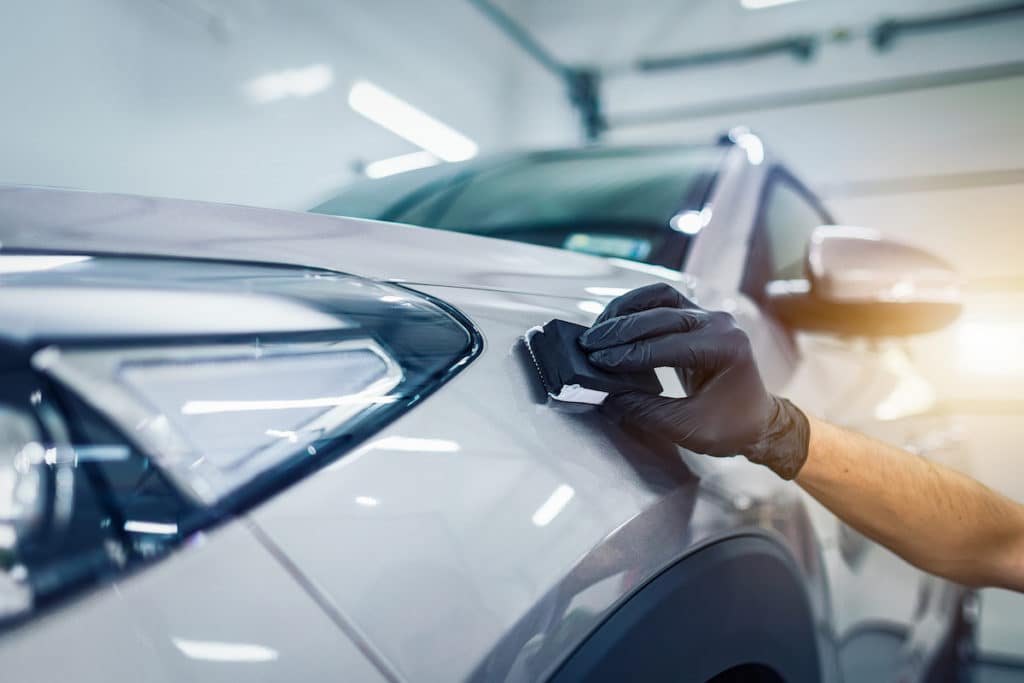A Comprehensive Guide to the Kinds Of Ceramic Covering on the marketplace
Ceramic layers have emerged as an essential remedy throughout numerous sectors due to their special properties and applications. As we discover the unique attributes and applications of these layers, the effects for performance and durability end up being significantly obvious, increasing inquiries concerning which kind might best match your needs.
Recognizing Ceramic Coatings
Ceramic finishes are sophisticated protective remedies that have acquired appeal in different industries, particularly in automotive and aerospace applications. These coatings consist of a liquid polymer that, when cured, forms a long lasting, hydrophobic layer externally of the substrate. This layer gives enhanced resistance to environmental pollutants, UV radiation, and chemical direct exposure, thereby extending the life and aesthetic appeal of the underlying product.
The fundamental part of ceramic coatings is silica, which adds to their solidity and durability. The application process normally involves surface preparation, application of the coating, and healing, which can be accomplished with warm or UV light. When healed, ceramic coverings exhibit remarkable bonding properties, enabling them to stick strongly to a range of surfaces, including metals, plastics, and glass.
In addition to their safety functions, ceramic layers also supply simplicity of maintenance. Their hydrophobic nature decreases the adherence of dirt and gunk, making cleaning easier and much less frequent. On the whole, the adoption of ceramic coverings stands for a significant advancement in surface area security technology, providing both functional and aesthetic benefits throughout numerous industries.
Sorts Of Ceramic Coatings
Numerous kinds of ceramic layers are readily available, each developed to fulfill particular performance needs and applications - ceramic coating sarasota. The most usual types include:
Silica-based Coatings: These finishings primarily contain silicon dioxide and are known for their durability and chemical resistance. They are extensively utilized in automobile and commercial applications.
Titanium Dioxide Coatings: Popular for their photocatalytic homes, titanium dioxide layers are often applied in atmospheres where self-cleaning and antifungal properties are preferable, such as in building products and vehicle surfaces.
Zirconia Coatings: Identified by their high-temperature security and thermal resistance, zirconia coatings are used in applications such as turbine engines and high-performance automobile components.
Alumina Coatings: Exhibiting excellent hardness and thermal security, alumina layers are regularly used in wear-resistant applications, including reducing tools and commercial equipment. - scratch repair sarasota
Crossbreed Coatings: Incorporating the homes of numerous products, hybrid finishings provide improved performance attributes, making them suitable for special and requiring applications.
Each sort of ceramic covering serves distinctive purposes, permitting customers to select the most proper service based upon certain ecological conditions and efficiency demands.
Benefits of Ceramic Coatings
Ceramic finishes, in certain, offer countless advantages that make them progressively preferred amongst suppliers and consumers alike. These finishes are immune to scrapes, chemicals, and UV rays, making sure that the underlying surface remains secured over time.
In addition to longevity, ceramic finishes supply exceptional hydrophobic residential properties, permitting easy cleansing and maintenance. This water-repellent nature minimizes the adherence of dirt, gunk, and various other contaminants, which can extend the aesthetic appeal and functionality of the surface area. Additionally, ceramic coverings can substantially enhance thermal resistance, making them suitable for applications that withstand heats.

Application Process
When using ceramic finishings, a precise strategy is vital to attain optimum results. The application process generally starts with thorough surface area prep work. This includes cleaning, sanitizing, and polishing the surface area to remove all impurities, including dust, grease, and prior waxes or sealers. A clean surface area makes certain correct attachment of the coating.
Once the surface is prepped, the next action is to apply the ceramic finish. The covering must be applied in thin layers, as thicker applications can lead to uneven finishes.
After application, the covering needs a details healing time, typically ranging from a couple of hours to a full day, depending on the item. Adhering to these check my reference steps vigilantly will maximize the effectiveness and long life of the ceramic layer, offering a sturdy safety layer for the surface.
Upkeep and Durability
To make certain the durability and effectiveness of a ceramic finishing, normal upkeep is necessary. Ceramic coatings, understood for their resilience and safety top qualities, call for particular care regimens to optimize their life expectancy and efficiency. The primary step in upkeep includes regular washing with pH-neutral soap, avoiding extreme chemicals that can degrade the covering. It is a good idea to wash the vehicle routinely, preferably every two weeks, to stop the build-up of pollutants that might compromise the coating's integrity.
Along with regular washing, regular examinations are essential. Try to find signs of wear or damage, such visit this page as hydrophobic buildings reducing or surface blemishes. If necessary, a light gloss might be applied to invigorate the finish without removing it away.
Moreover, the application of a booster spray can improve the finish's hydrophobic impacts and recover its gloss. This is especially helpful for coatings that have been in use for an extensive duration. Ultimately, by sticking to these upkeep practices, one can dramatically extend the life of a ceramic finish, making sure that it continues to provide ideal security versus environmental factors and preserve the aesthetic charm of the car.
Final thought
